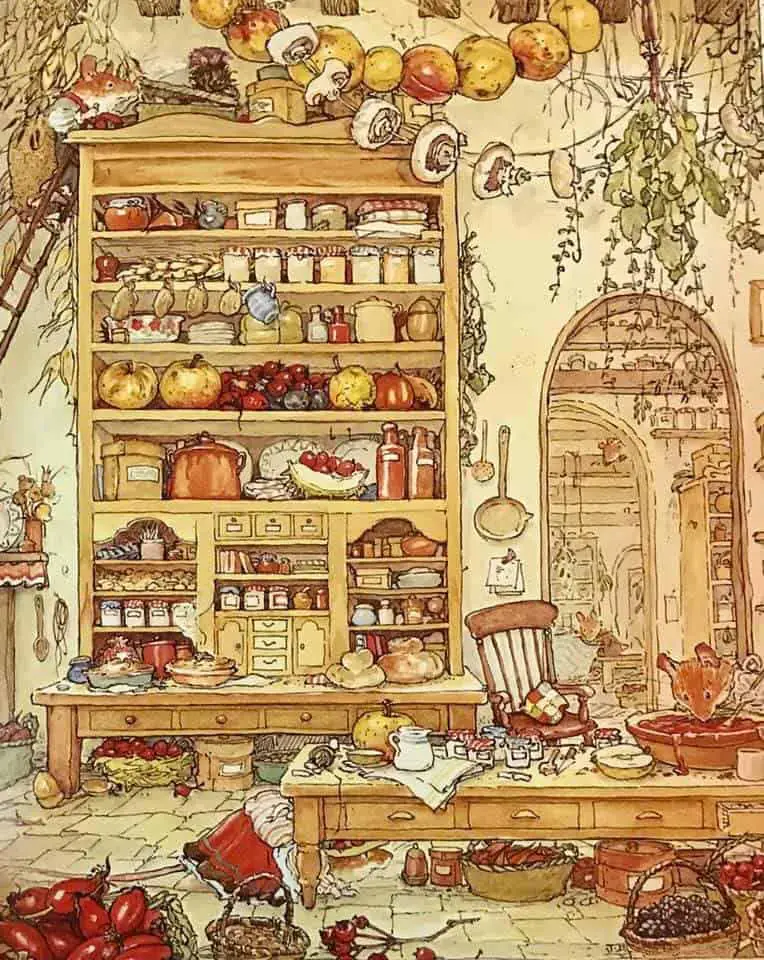A warm, safe, lighted place.
Carrie’s War by Nina Bawden
Hepzobah’s kitchen was always like that, and not only that evening. Coming I to it was like coming home on a bitter cold day to a bright, leaping fire. It was like the smell of bacon when you were hungry, loving arms when you were lonely; safety when you were scared….
Schnick schnack trifles for the little-ones by Oscar Pletsch 1867
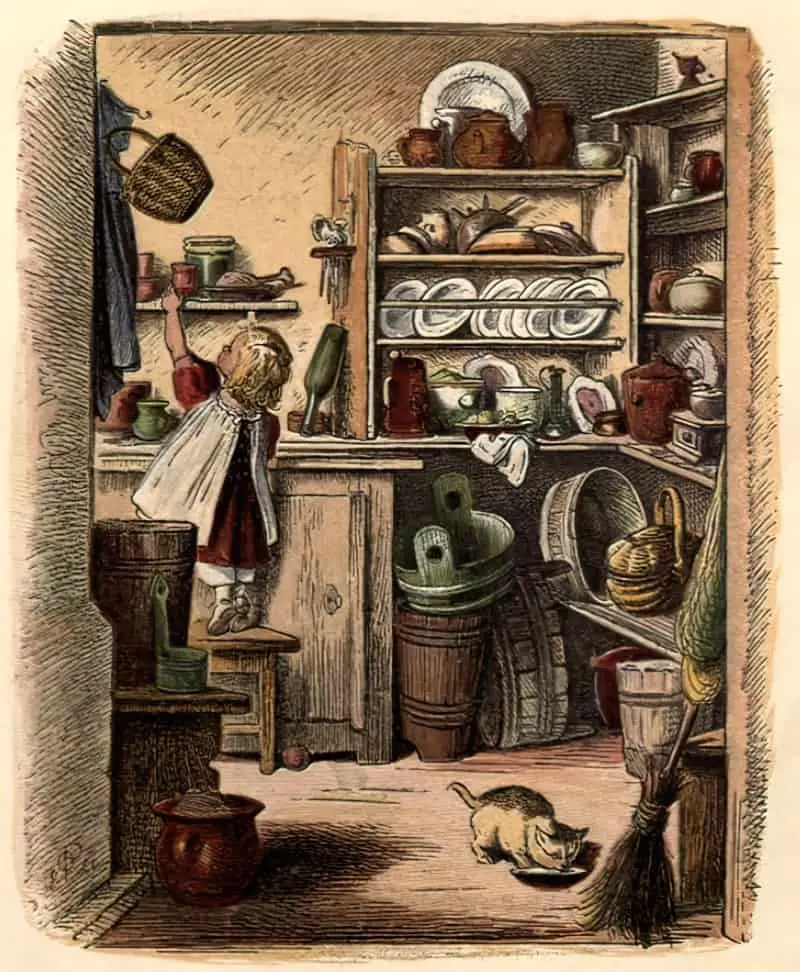
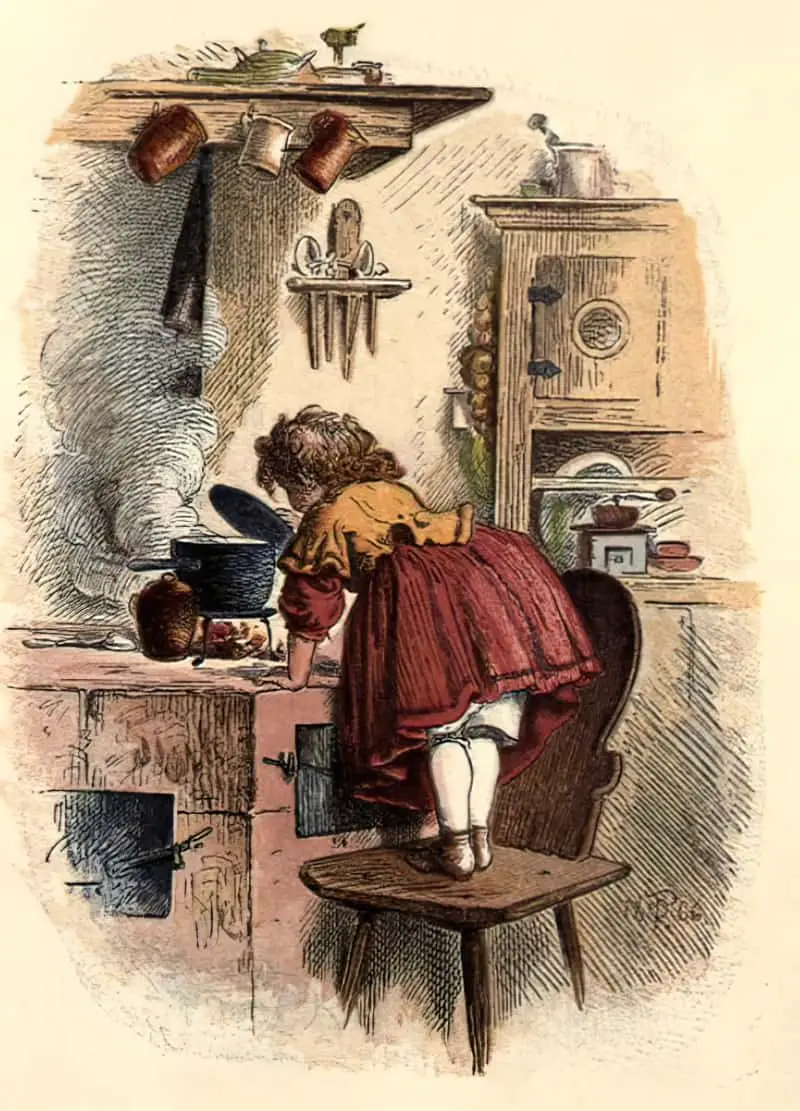
As Rene Welleck and Warren Austin suggest in Theory of Literature, ‘domestic interiors may be metonymic or metaphoric expressions of character’.
The comforting image of an idealized maternal figure and environment are produced in Nina Bawden’s Carrie’s War. Carrie and her little brother Nick are evacuated to Wales during World War 2. They are billeted with a rather strange couple whose house is cold and austere. But they derive much comfort from visiting Hepzibah whose kitchen is “A warm, safe, lighted place … Coming into it was like coming home on a bitter cold day to a bright, leaping fire. It was like the smell of bacon when you were hungry; loving arms when you were lonely; safety when you were scared.’ Thus, the kitchen is a maternalized space, a place where warmth, the promise of food, bodily contact, and security conflate to produce feelings of comfort. When the children first meet Hepzibah she is “smiling. She was tall with shining hair the colour of copper. She wore a white apron, and there was flour on her hands. She has “a rather broad face, pale as cream, and dotted with freckles. Carrie thought she looked beautiful: so warm and friendly and kind.’ The feelings of homely, maternal comfort evoked by the descriptions of the kitchen and of Hepzibah herself are embellished and reinforced by sensuous descriptions of food. Carrie is shown the dairy where “there were speckly eggs in trays on the shelf, slabs of pale, oozy butter, and a big bowl of milk with a skin of cream on the top.
Carolyn Daniel, Voracious Children: Who Eats Whom In Children’s Literature
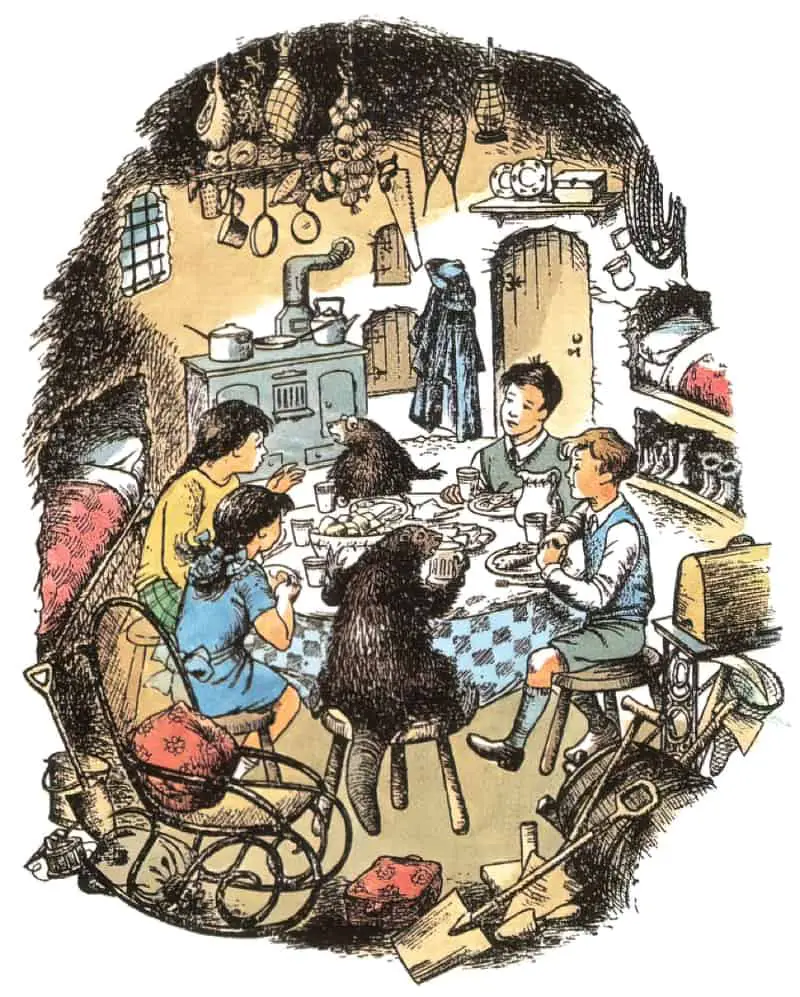
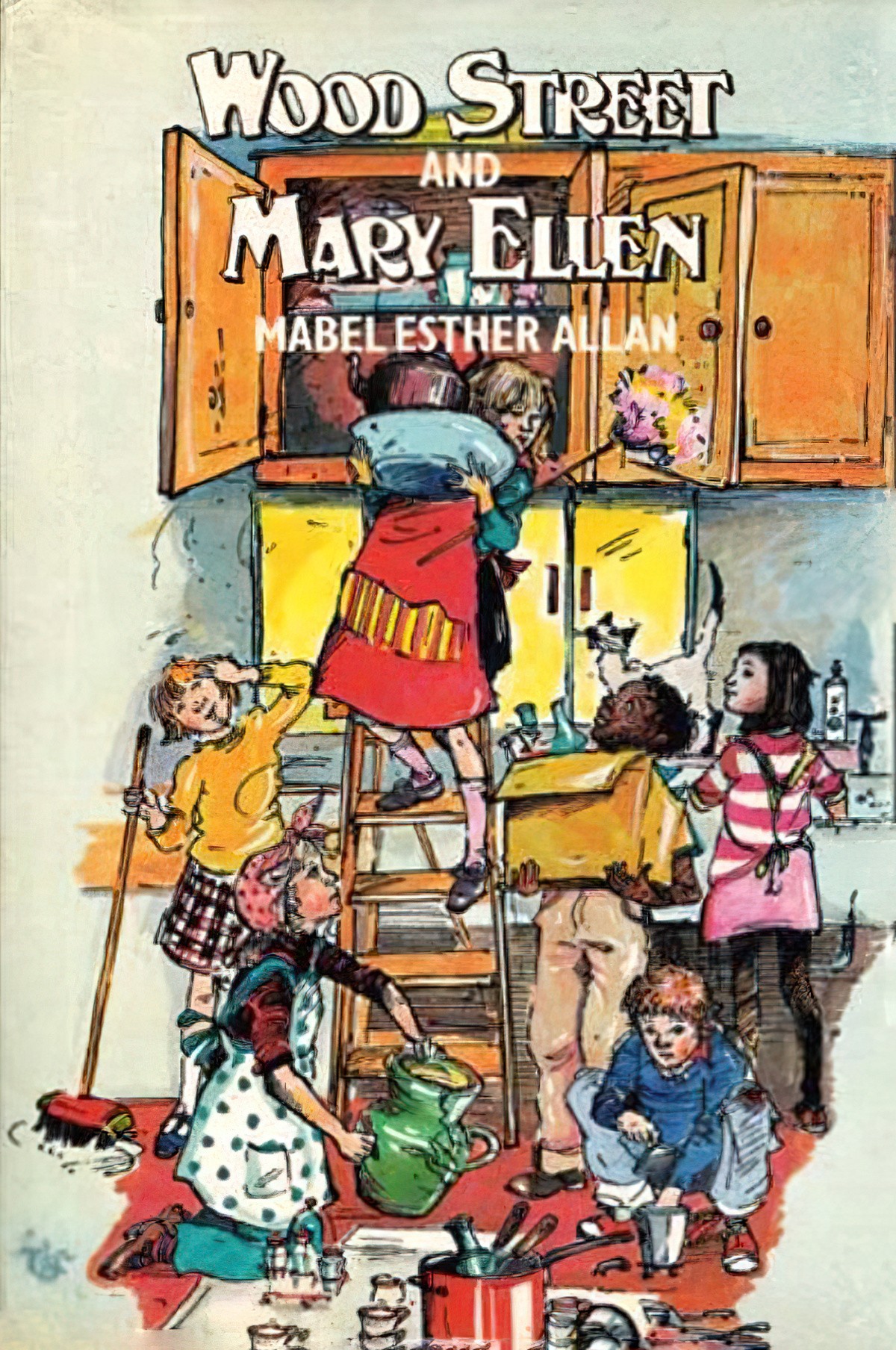
“Kitchen,” he says. “Come in.”
The kitchen is gas-heated, square and bare, almost institutional in its unadorned plainness. Table and four straightbacked wooden chairs. Battered fridge with chipped enamel; stainless steel sink and bench; a scarred clean cooker. There’s a decrepit Coronation teacaddy on a shelf over thebench, with a saucer holding soap and sinkplug beside it, and at the end of the bench, there is a canvas-coloured birdcage on a stand. She is surprised by that, although she can’t say for why.
Joe invites.
“Sit down and make yourself at home,” and goes on busying himself with the pots on the cooker.
The Bone People by Keri Hulme, describing a New Zealand kitchen of the early 1980s, setting it up as cosy to puncture the illusion later.
Irish poetry is particularly fond of the warm, cosy kitchen. This lies in apposition to the Otherworld — the world of fairies (not the good kind of fairy). See the poetry of Yeats.
The 1950s is an era authors still commonly return to, even if it’s just symbolically. Kate DiCamillo’s Mercy Watson series for emergent readers is symbolically 1950s. This was a very odd time in history. Men returned home to the West from war and reclaimed their dominant territory in the workplace. Women who had found vocational purpose outside the home were required to return to it. The woman in the home, serving from the kitchen, became the idealised image of the All American Family, and this spread all around the world.
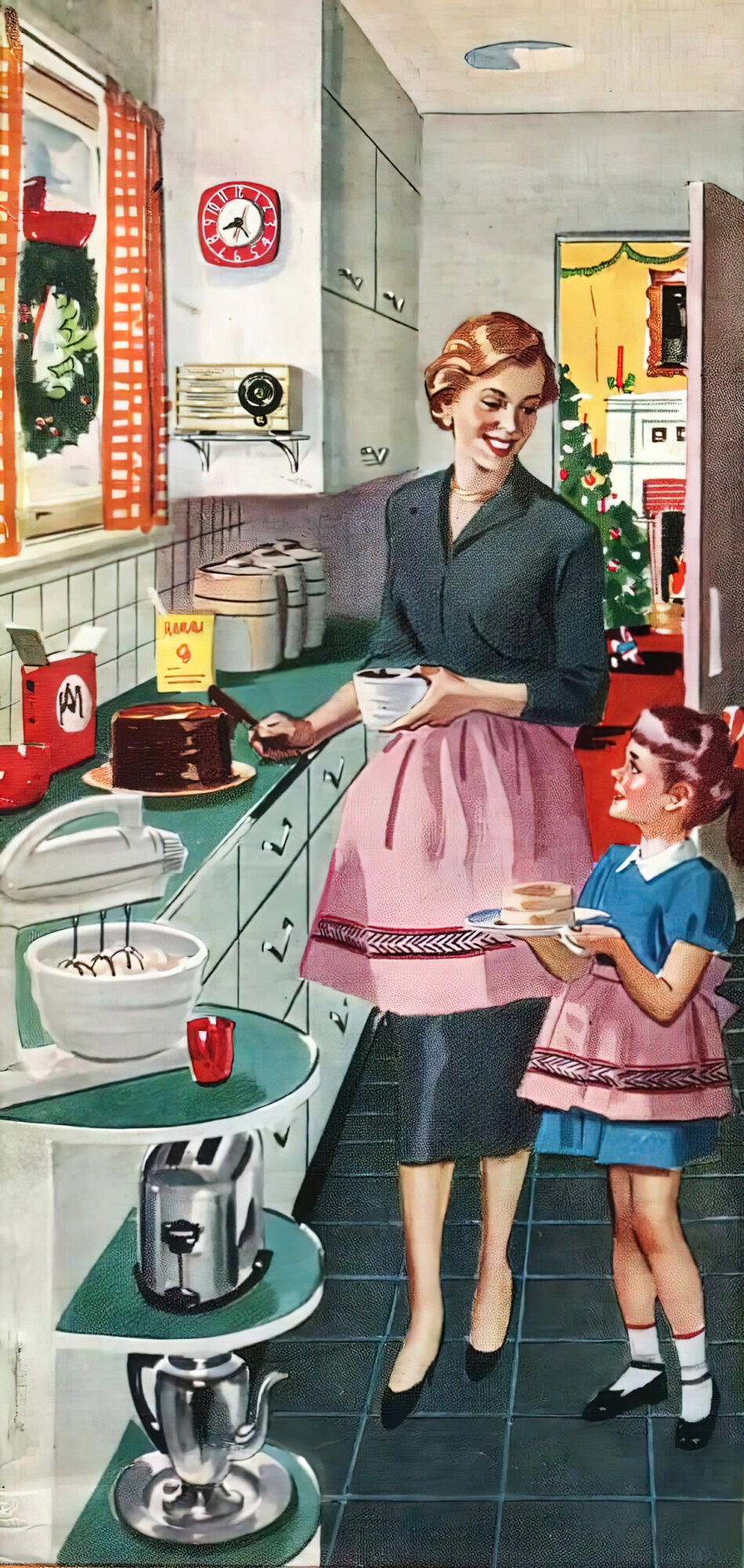
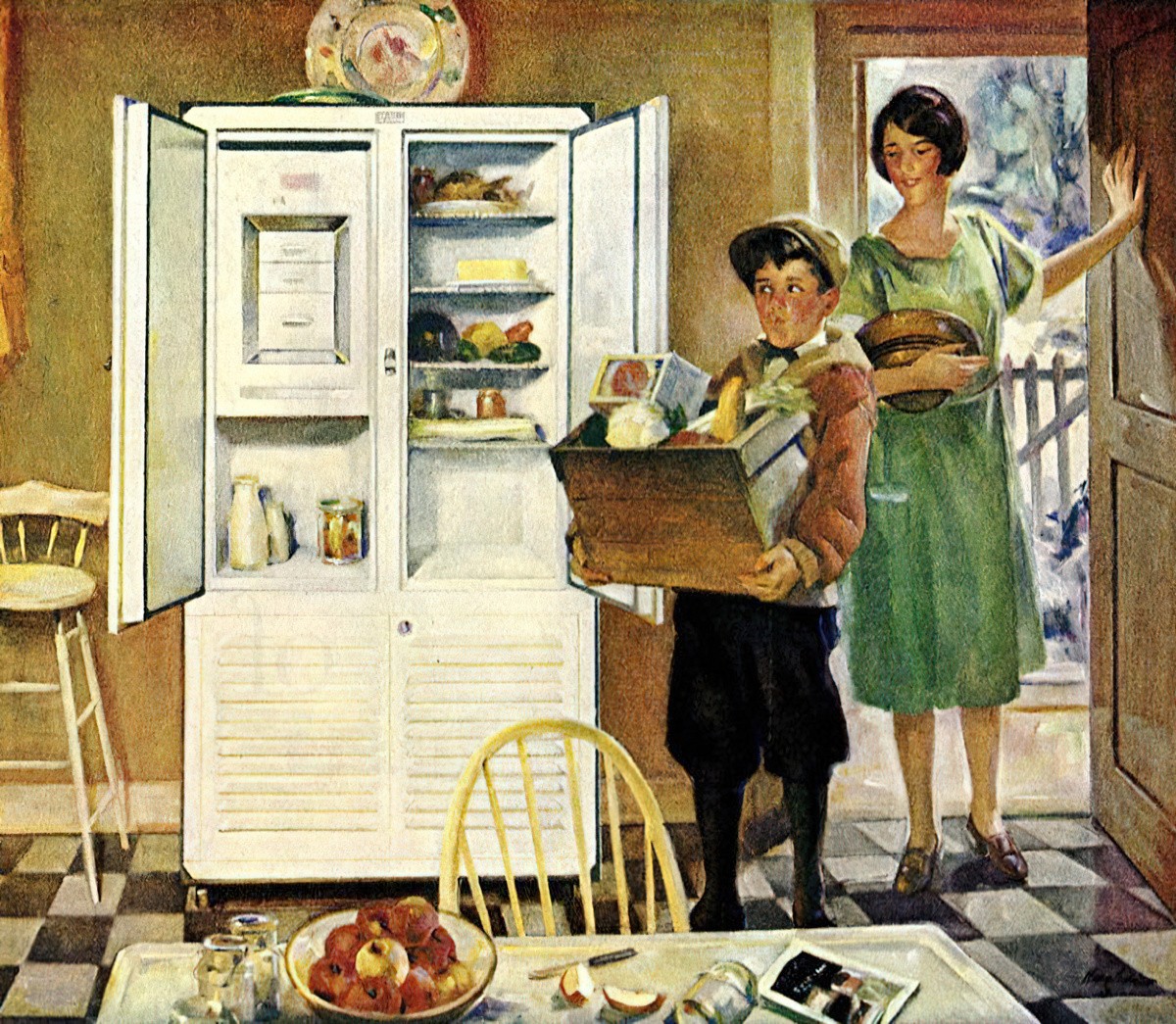
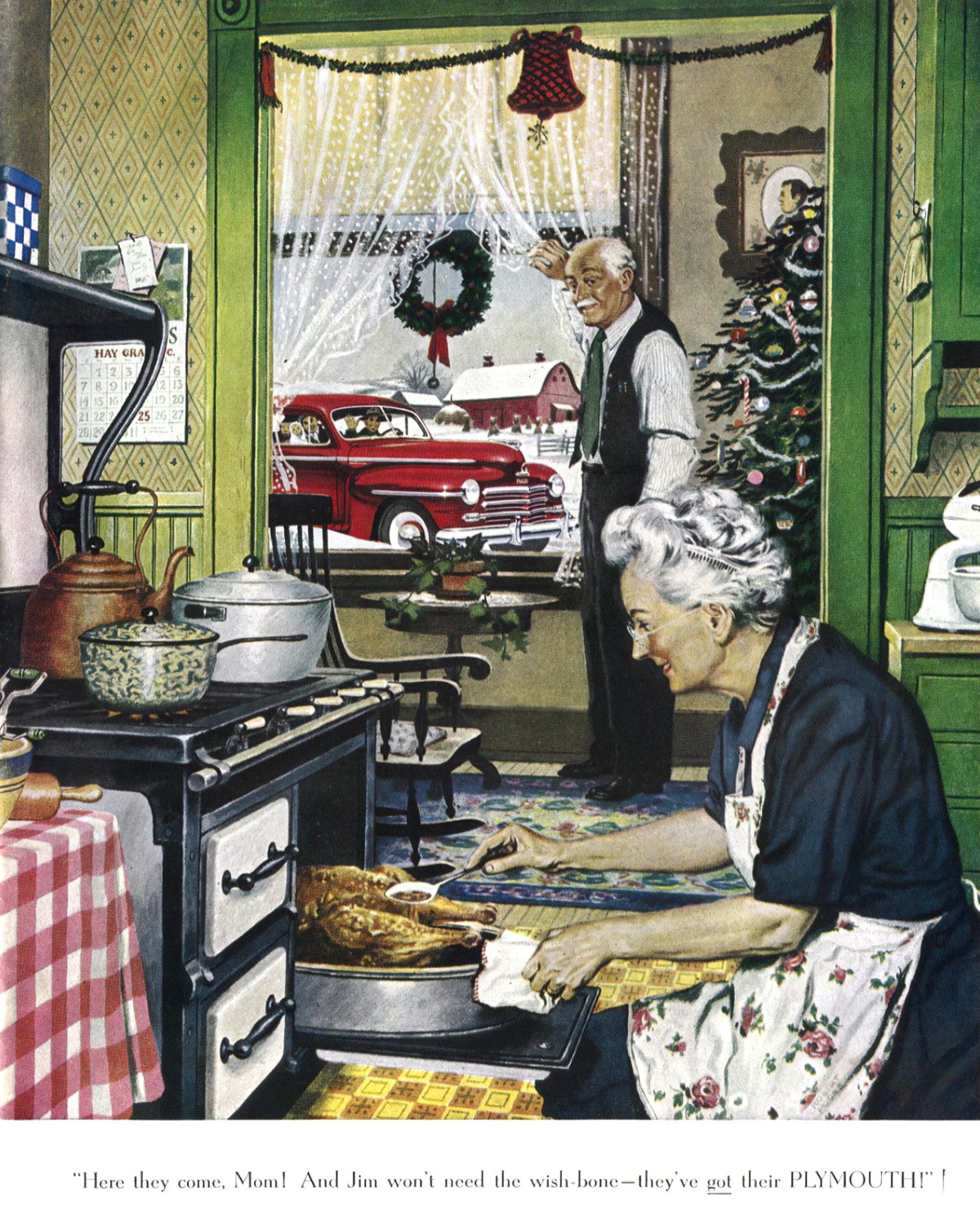
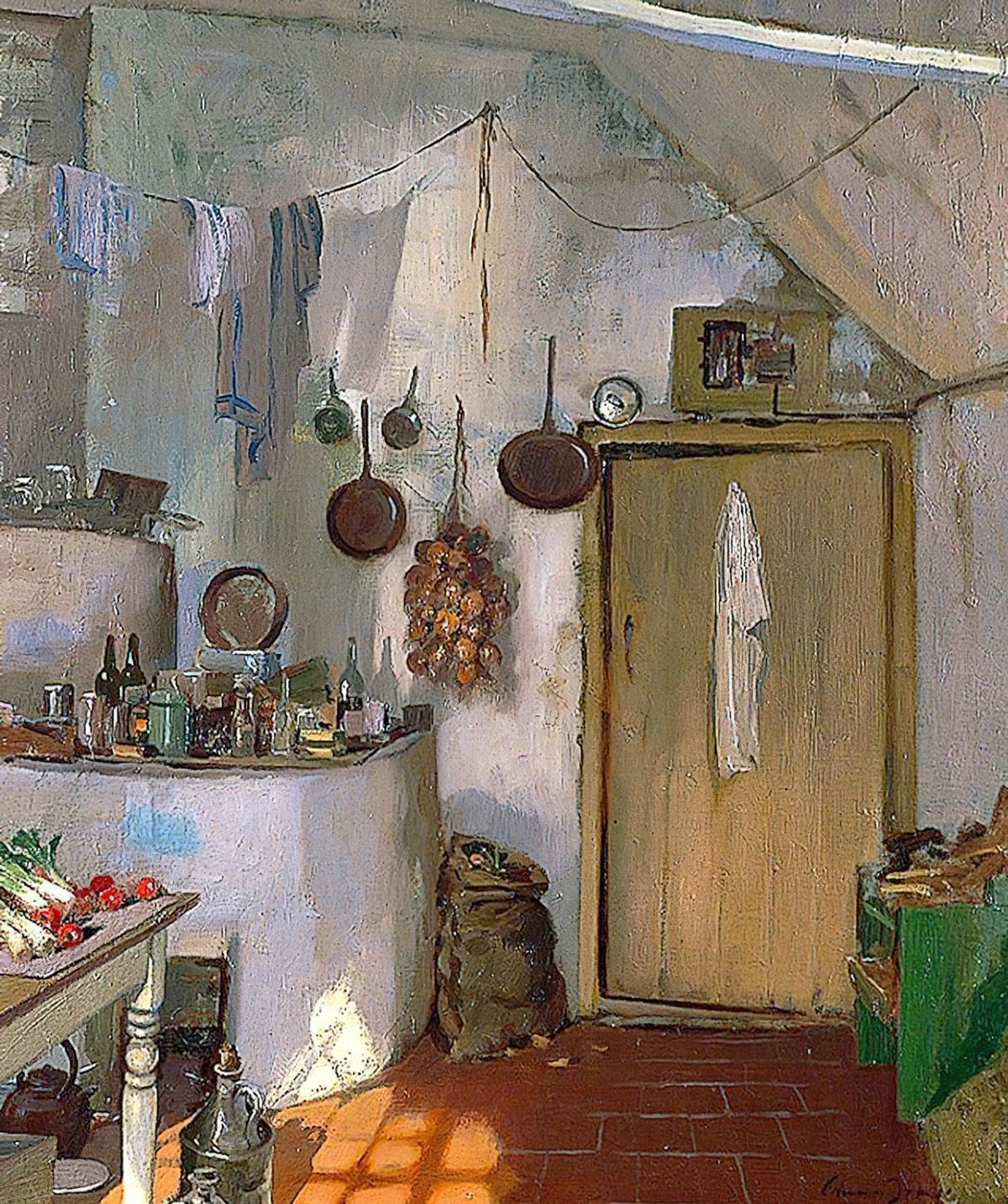
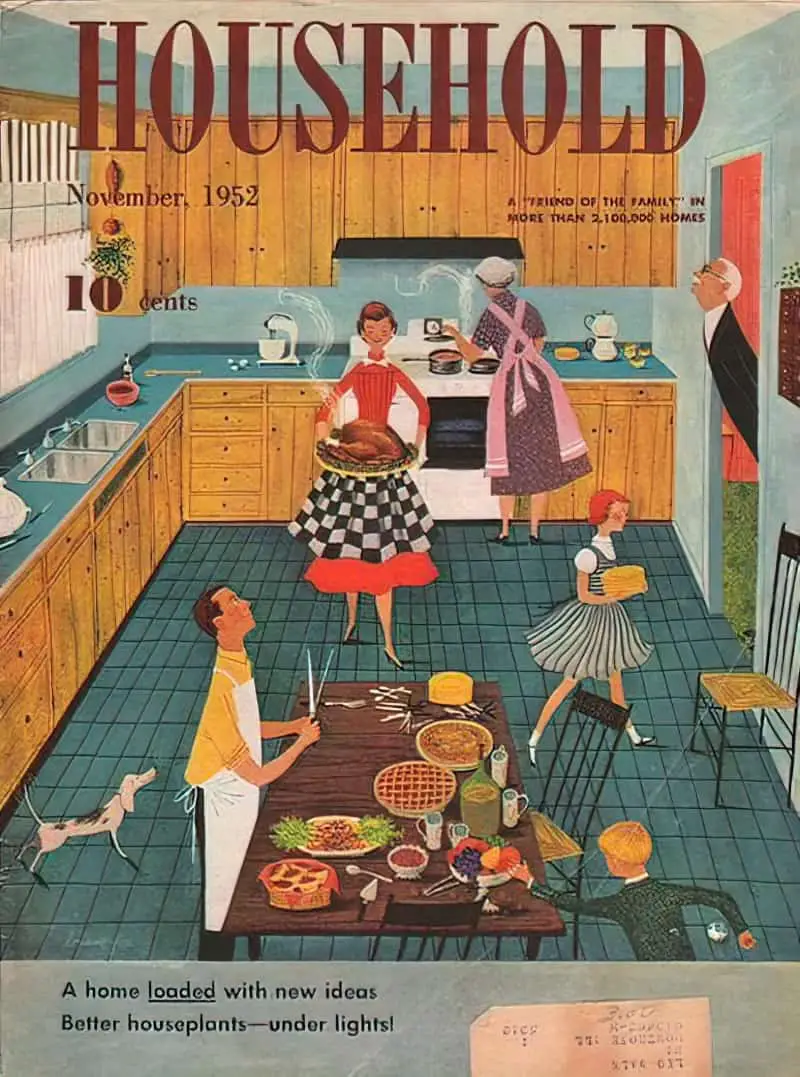
Do you have a favourite picture book kitchen? What does it say about the character who lives in it?
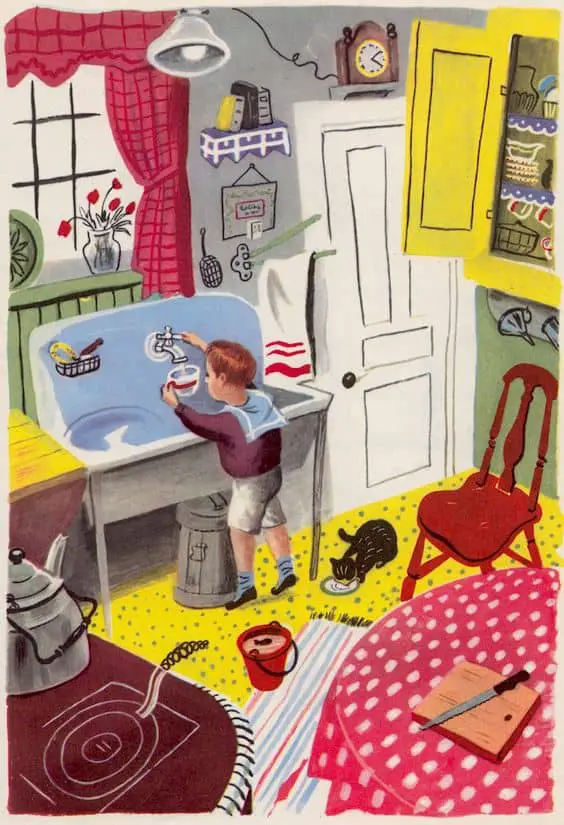
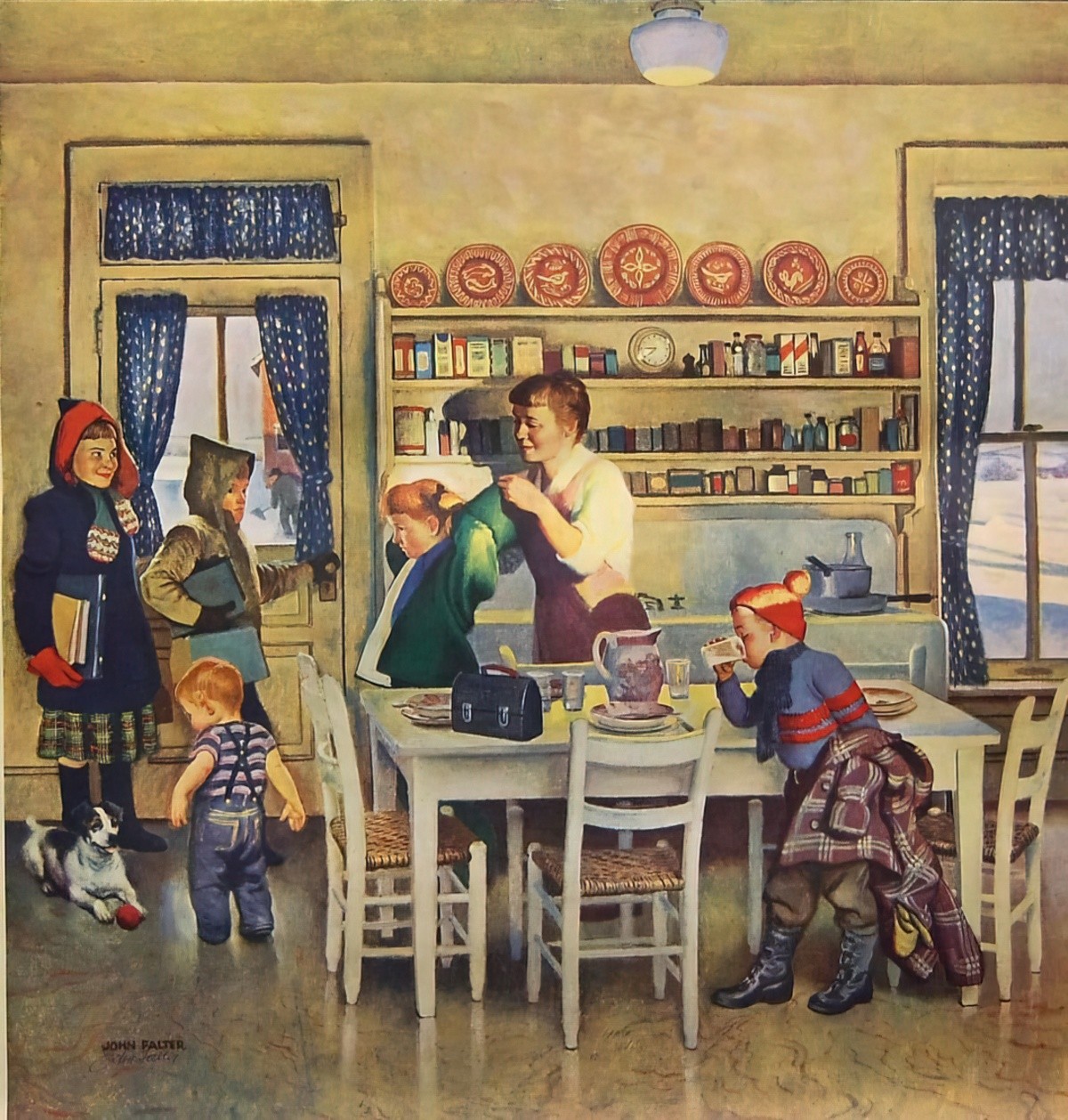
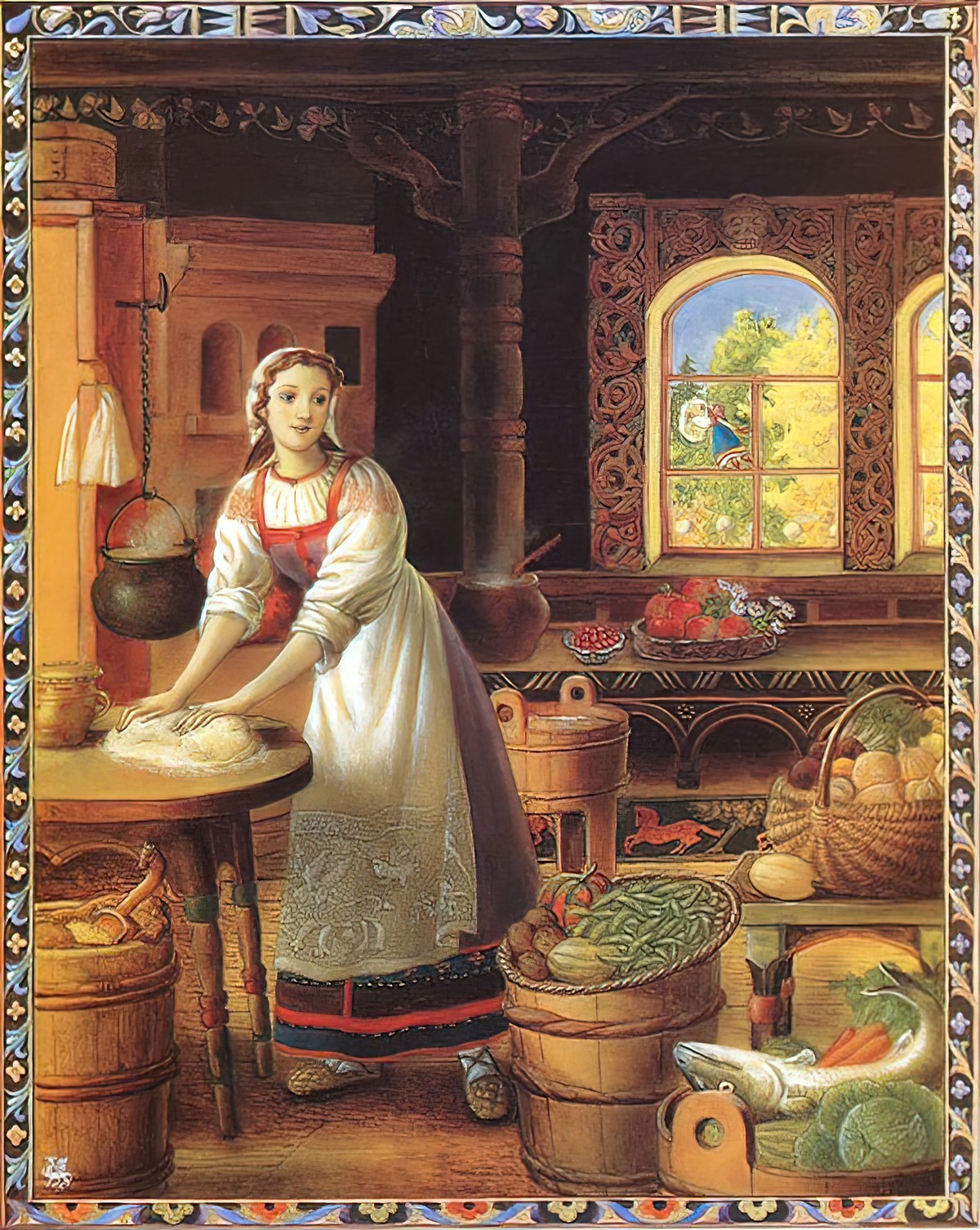
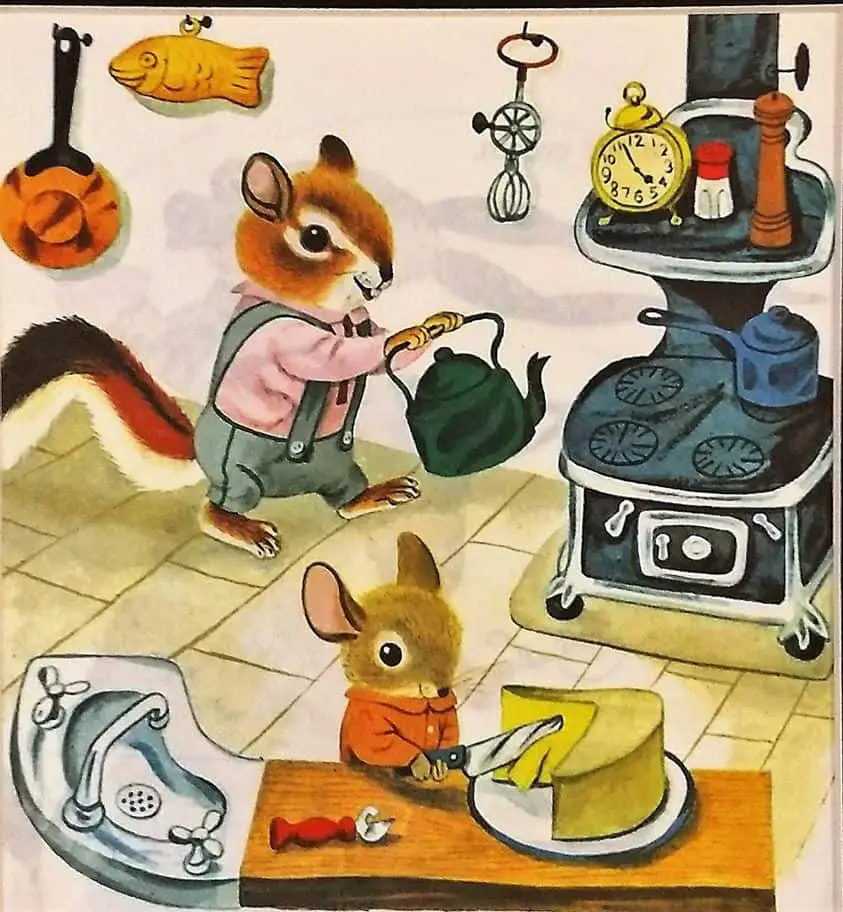
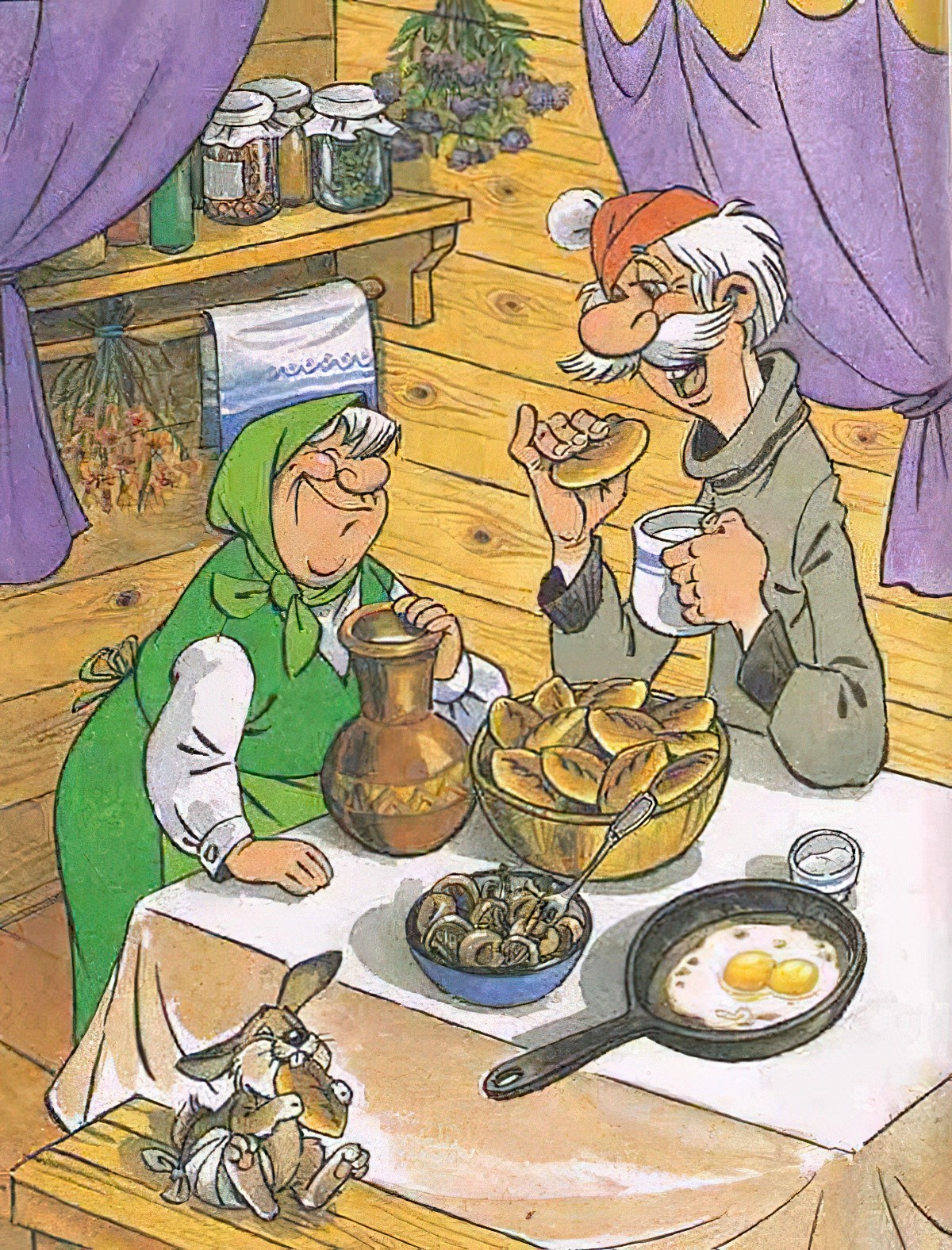
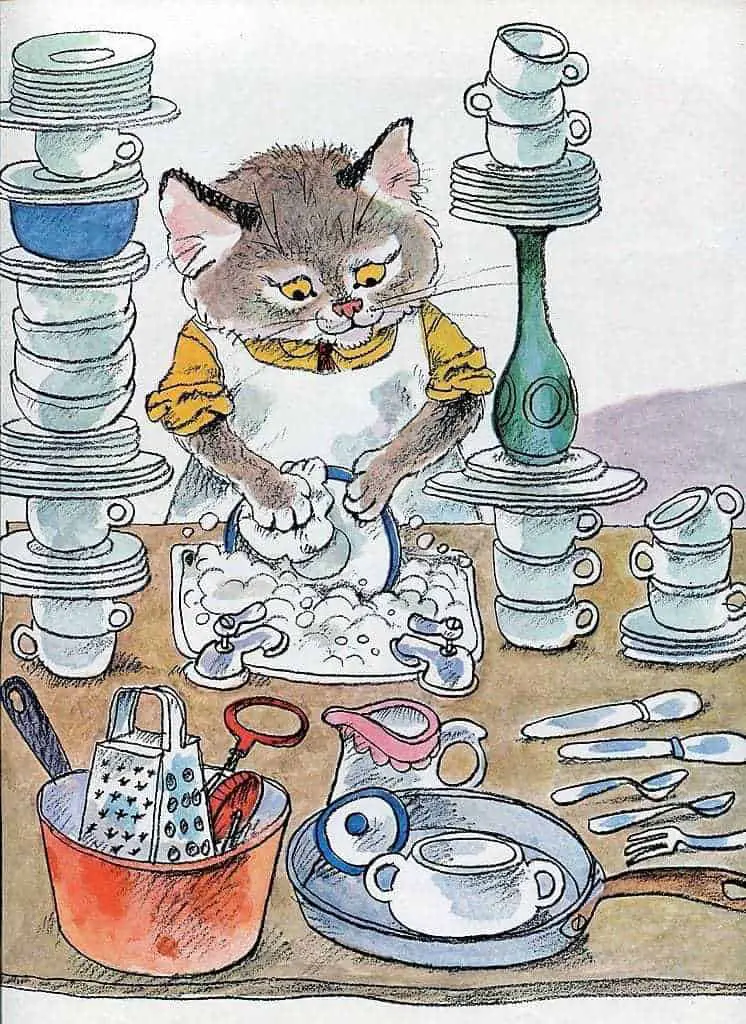
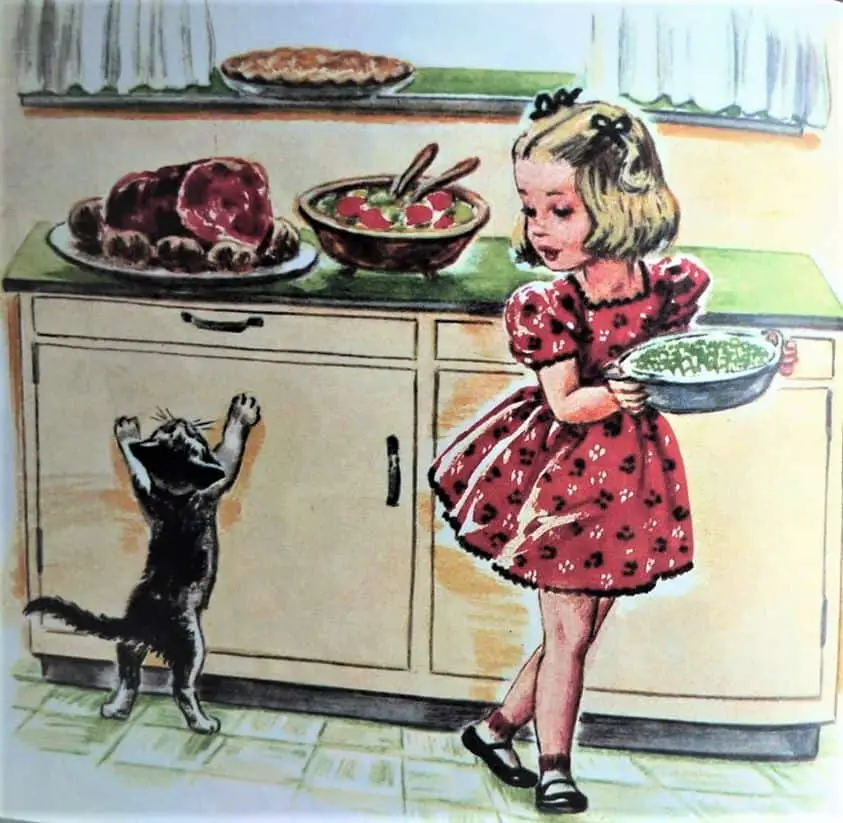
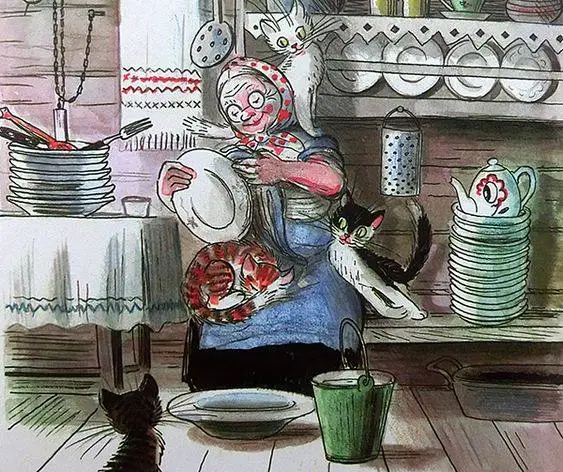
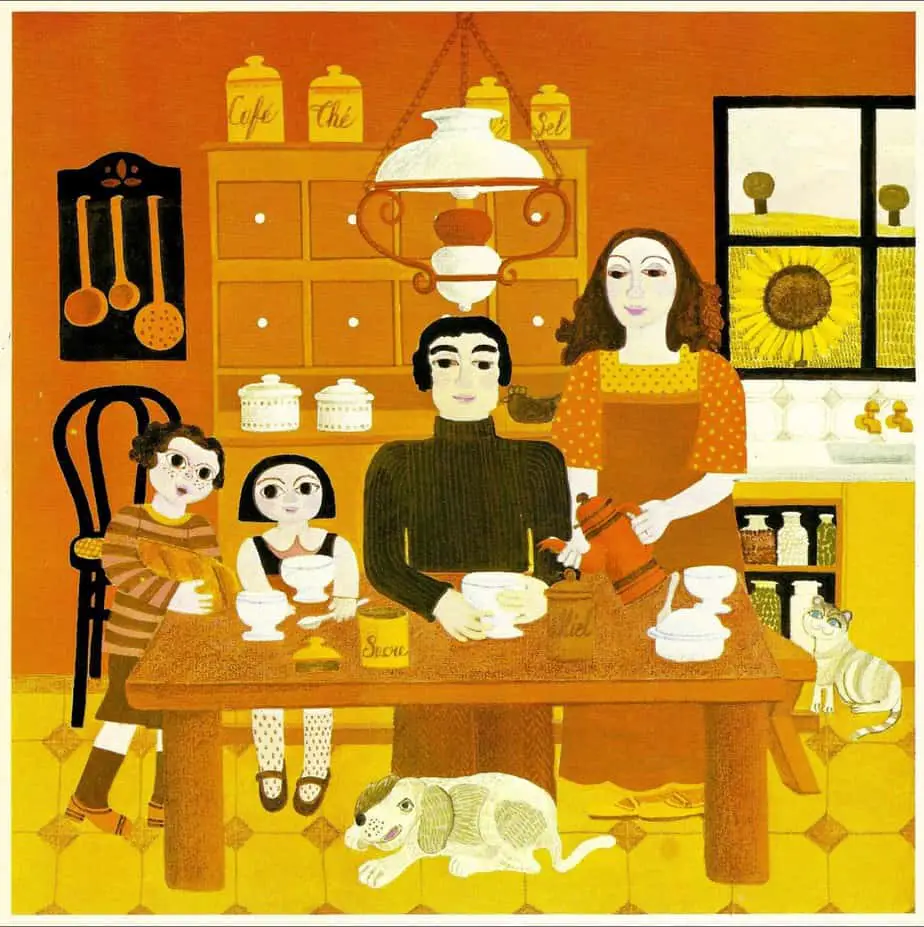
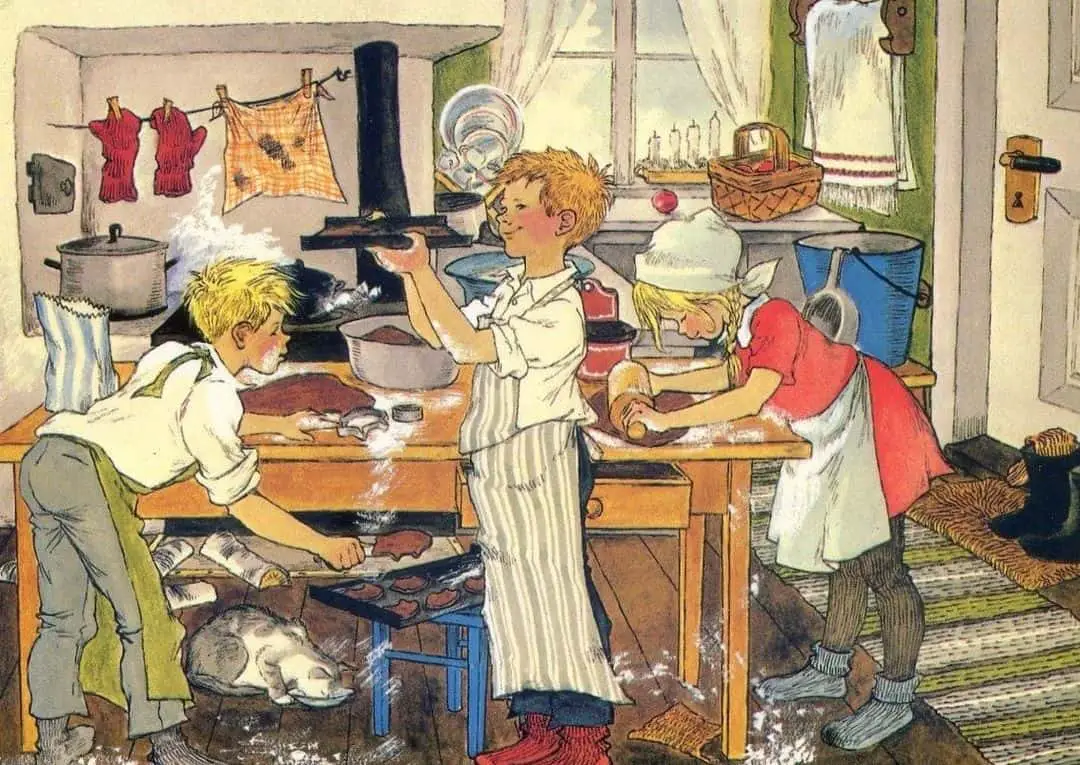
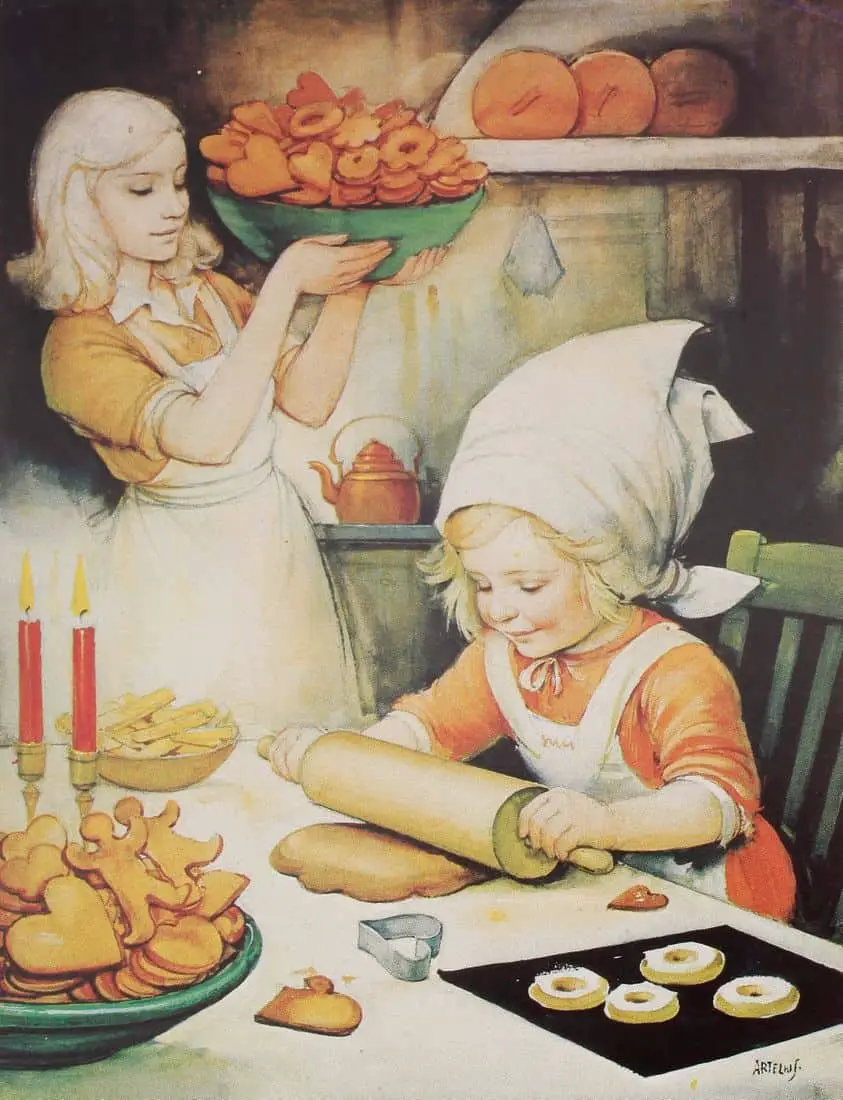
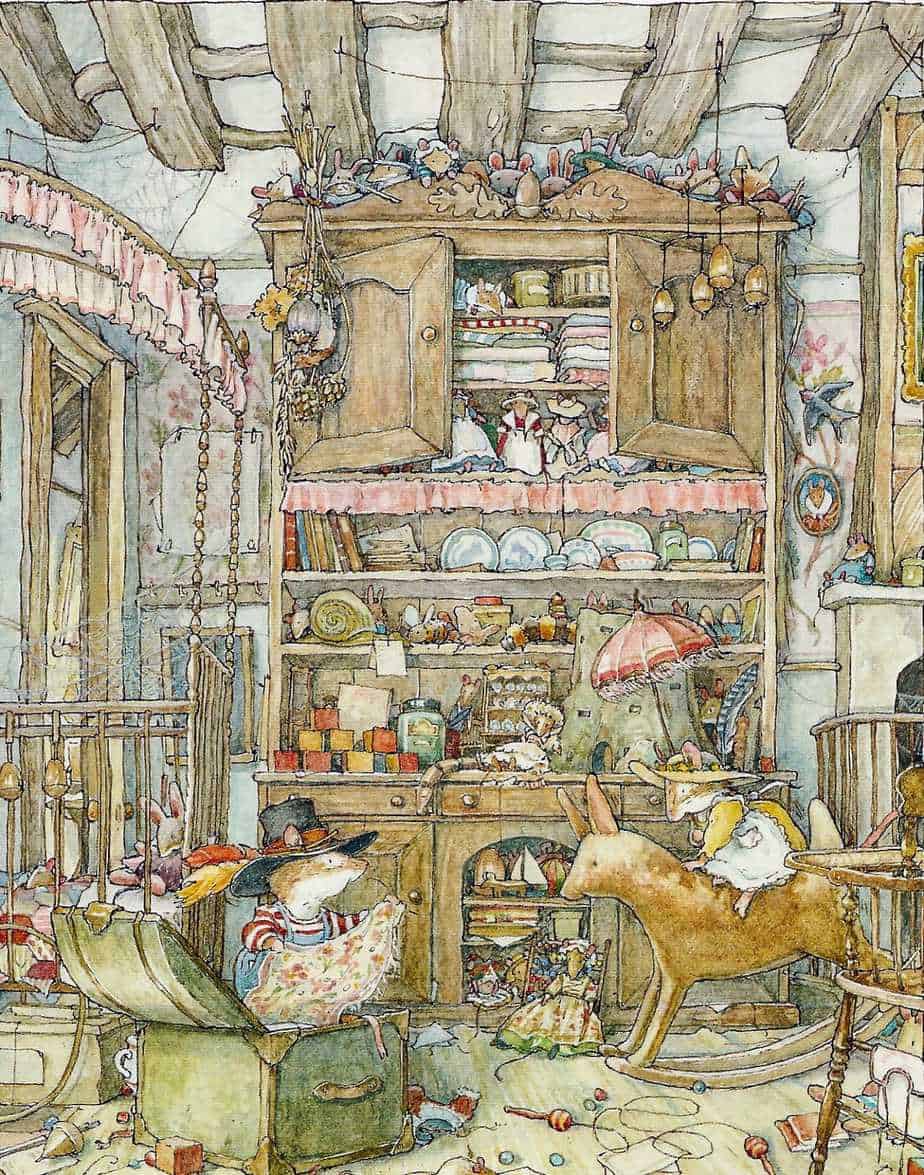
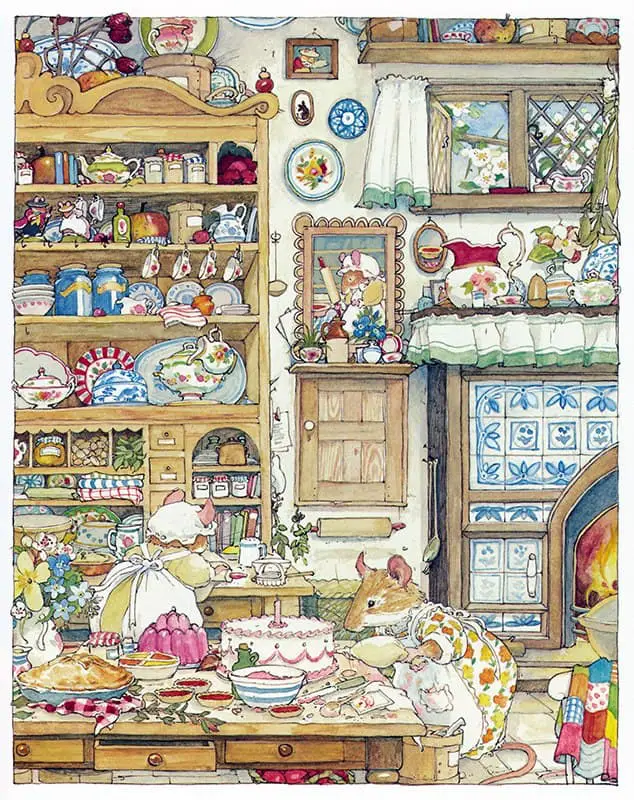
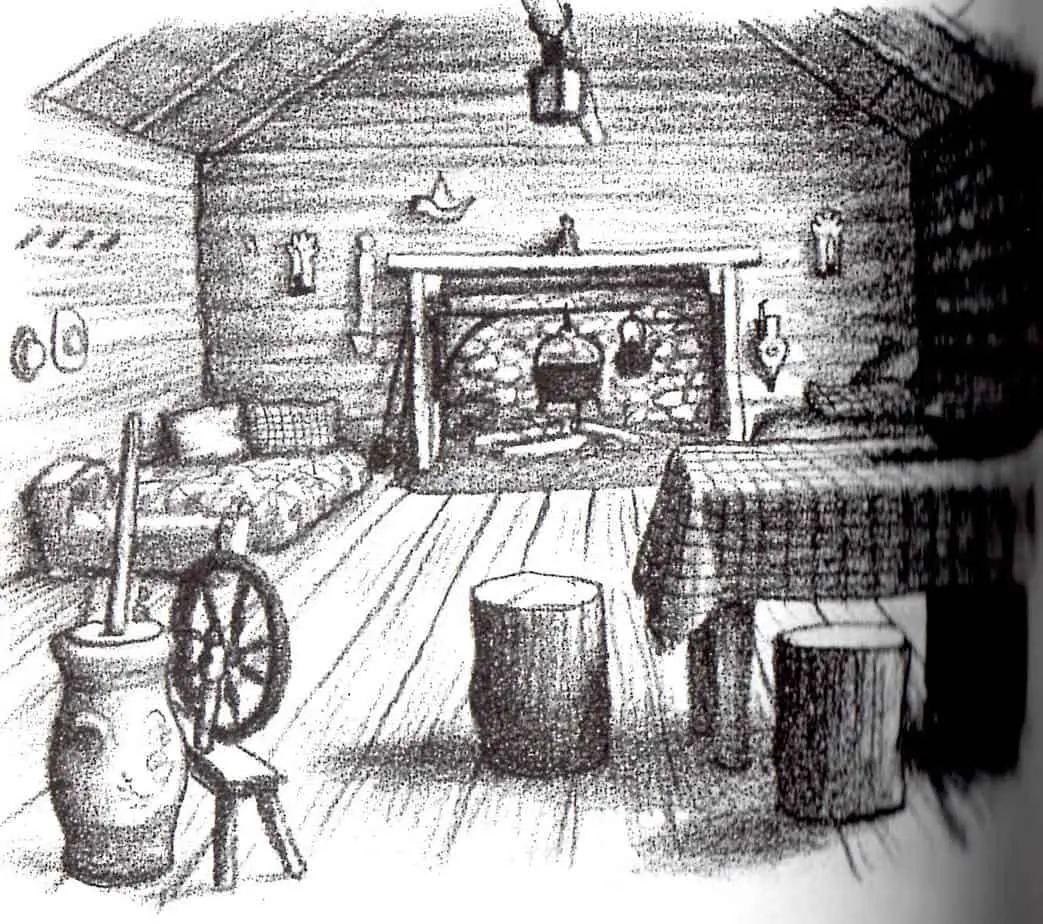
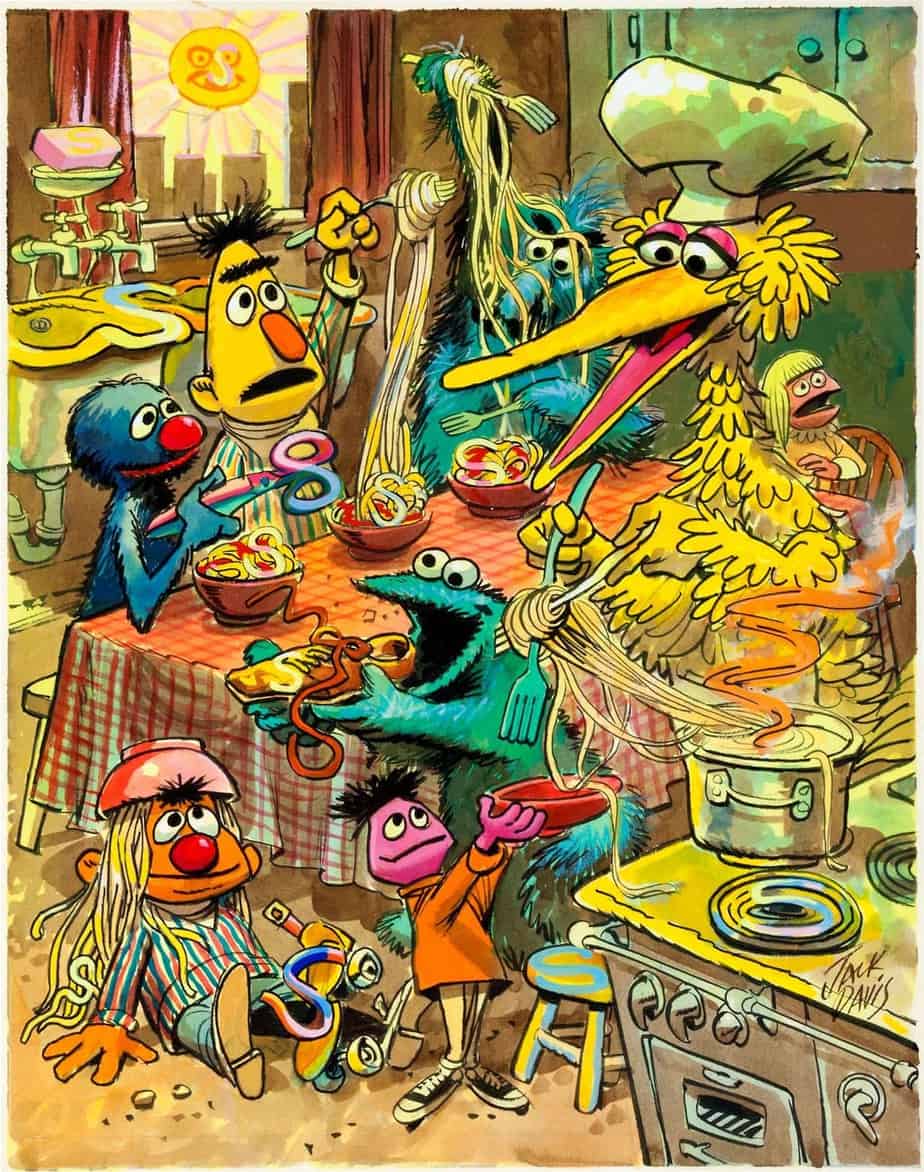
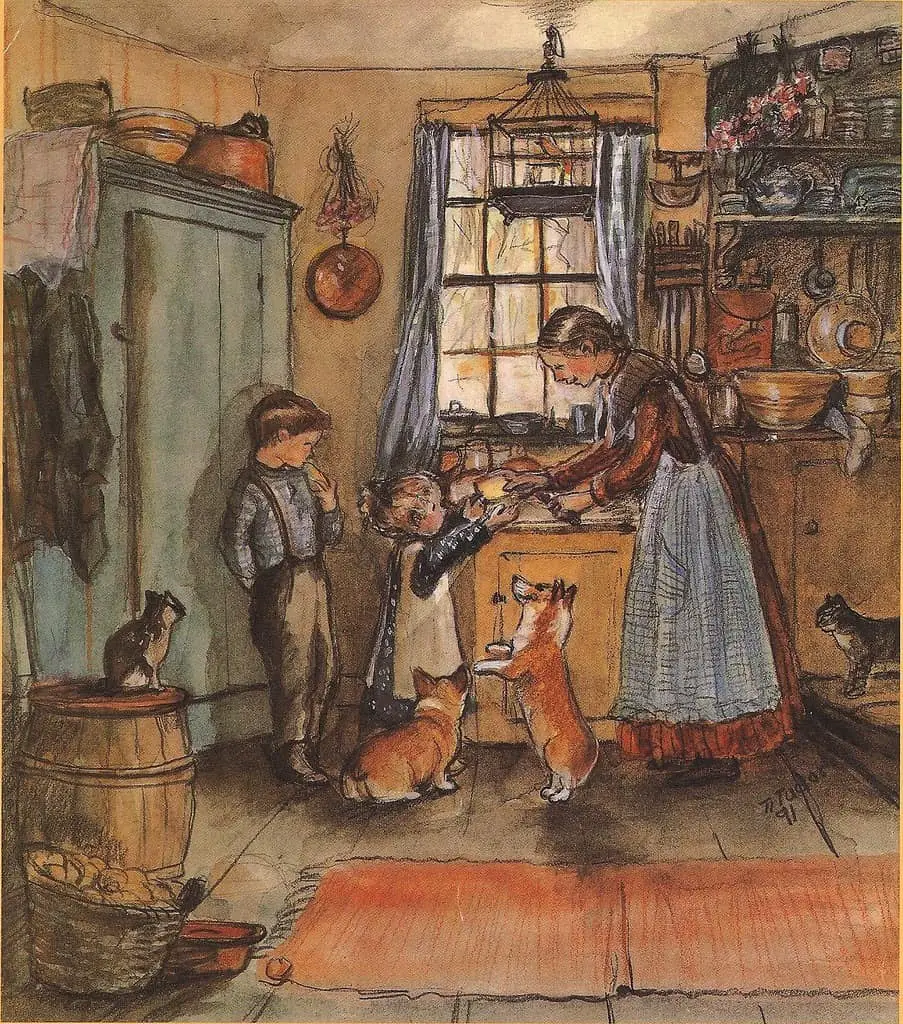
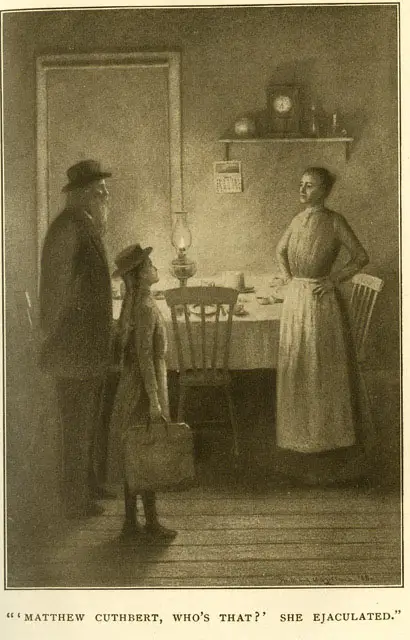
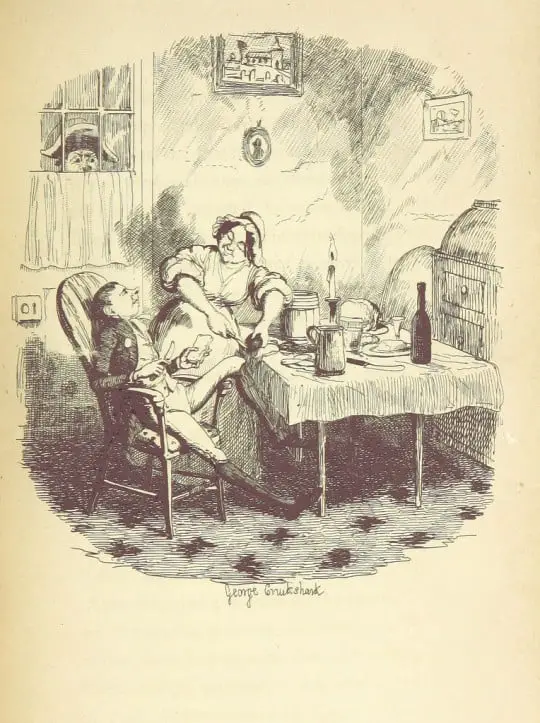
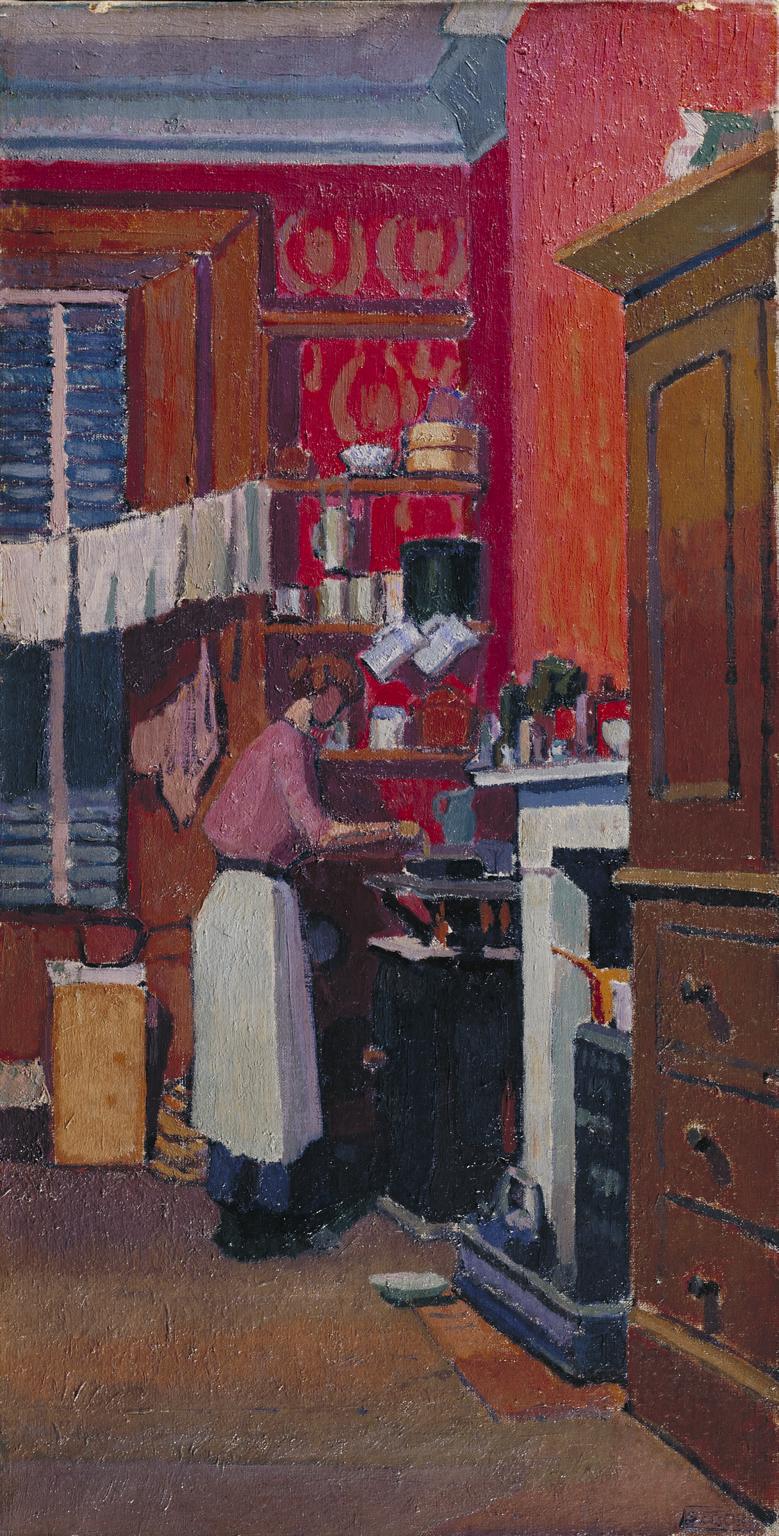
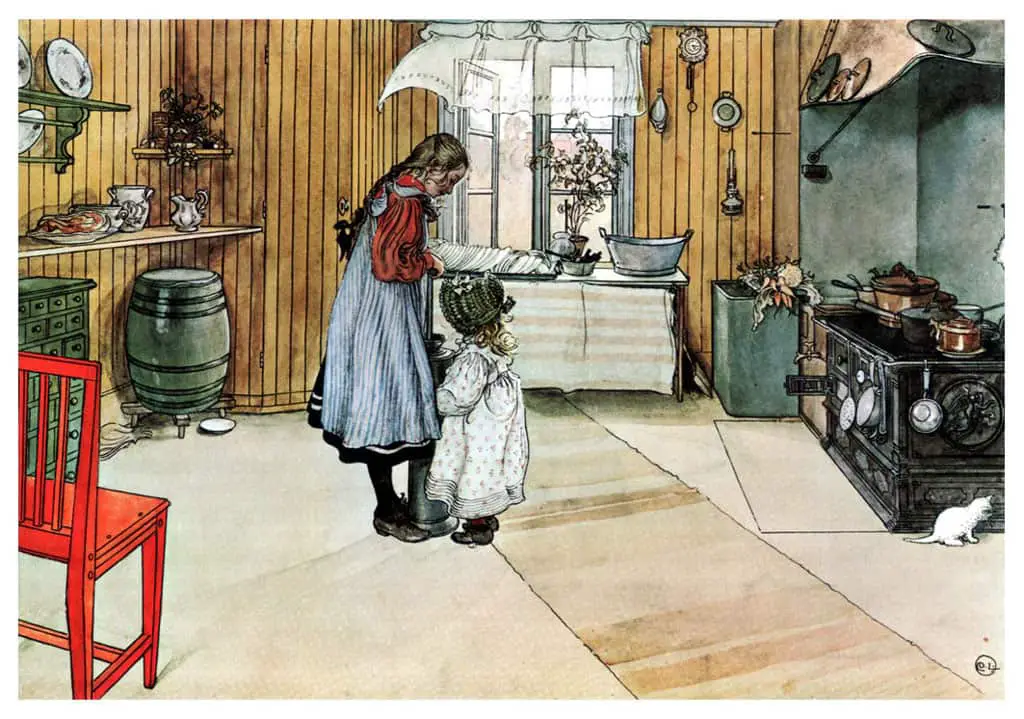
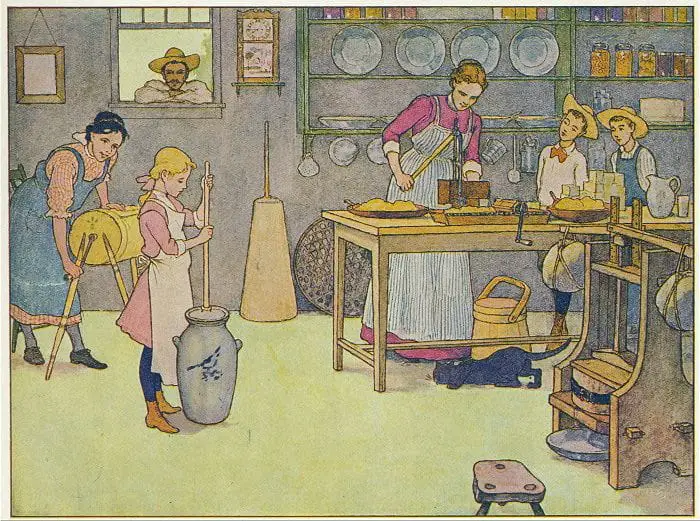
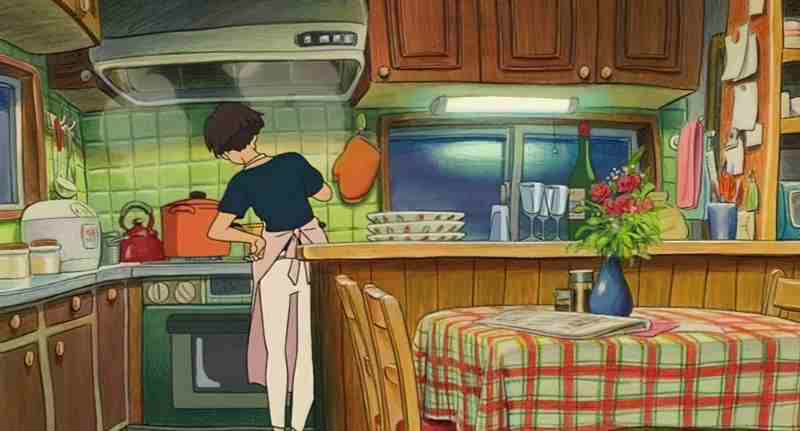
Animal Kitchens
The smaller, working-class Victorian kitchen or parlour would appear, to a modern child, to have all the warm, dark earthiness of rabbit hole or badger sett.
Margaret Blount, Animal Land
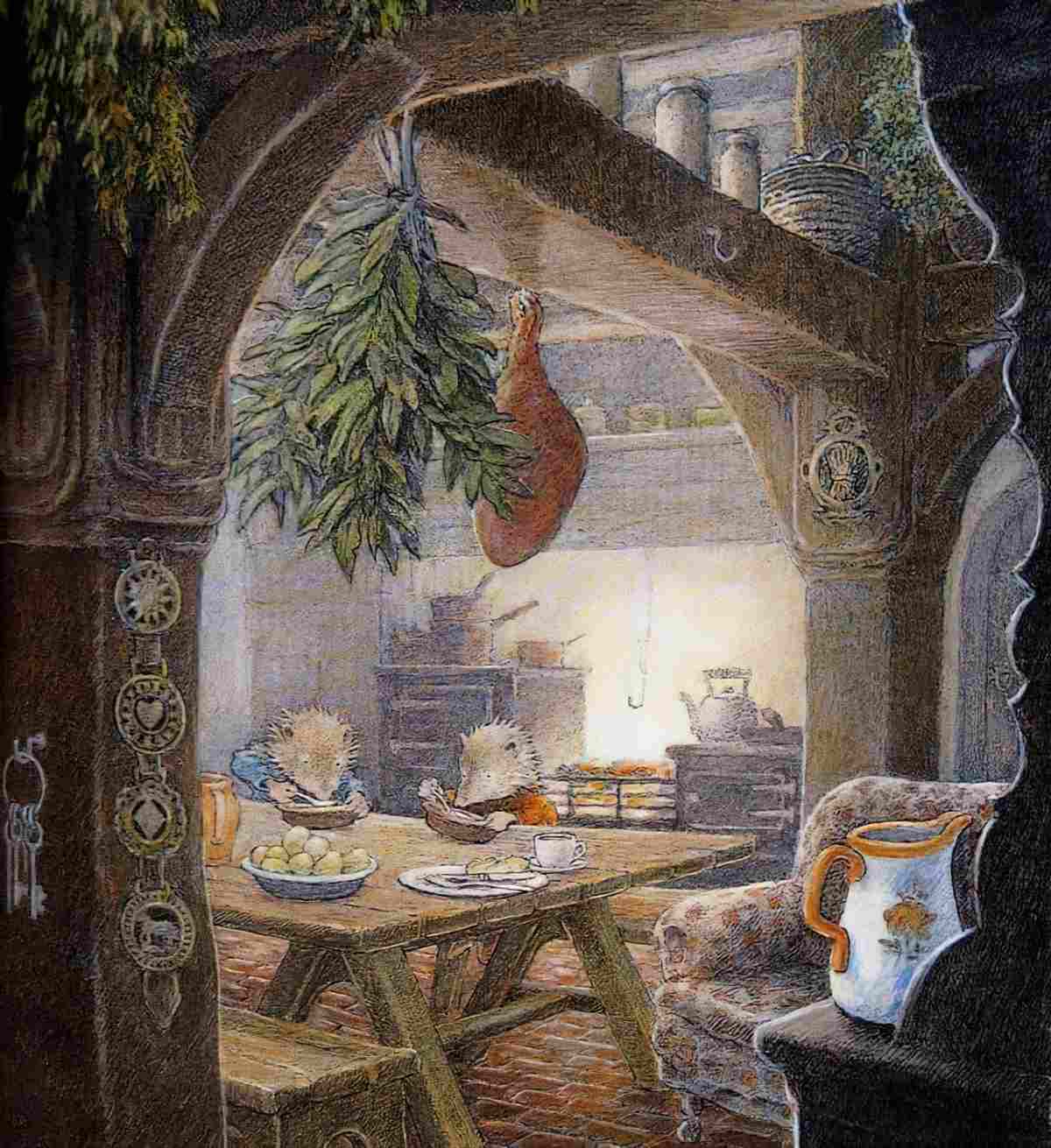
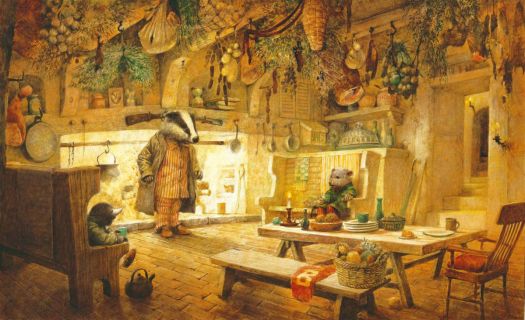
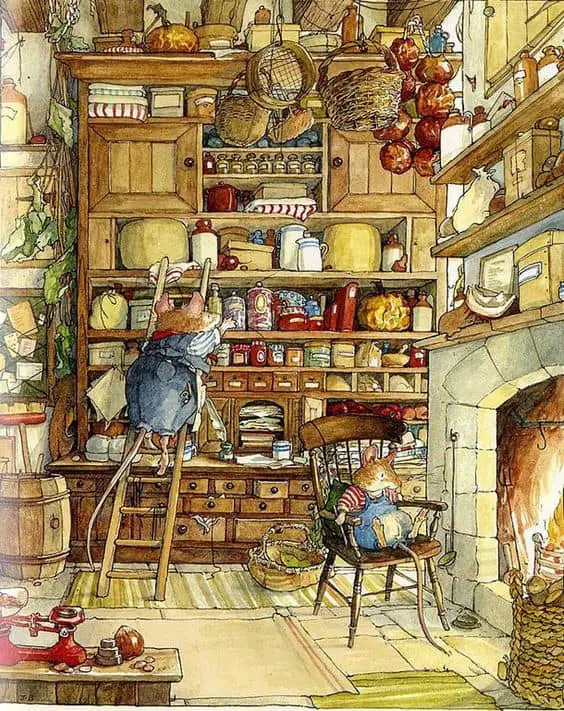
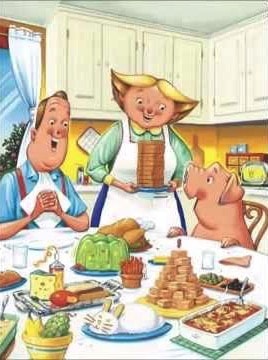
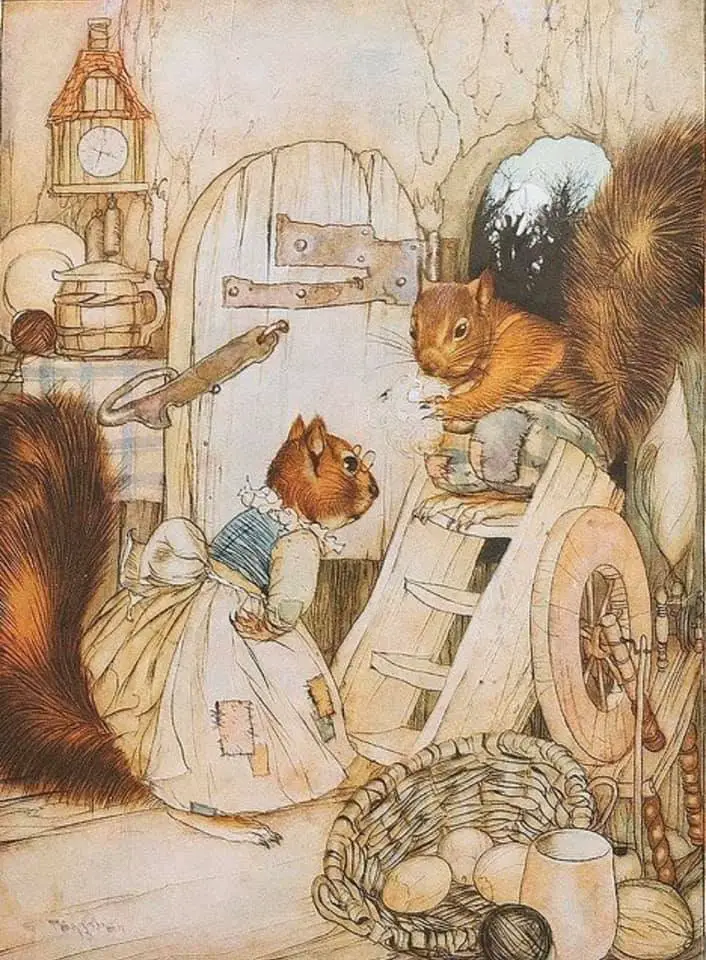
The cosy kitchen is often chaotic, overflowing with food (and love and happiness).
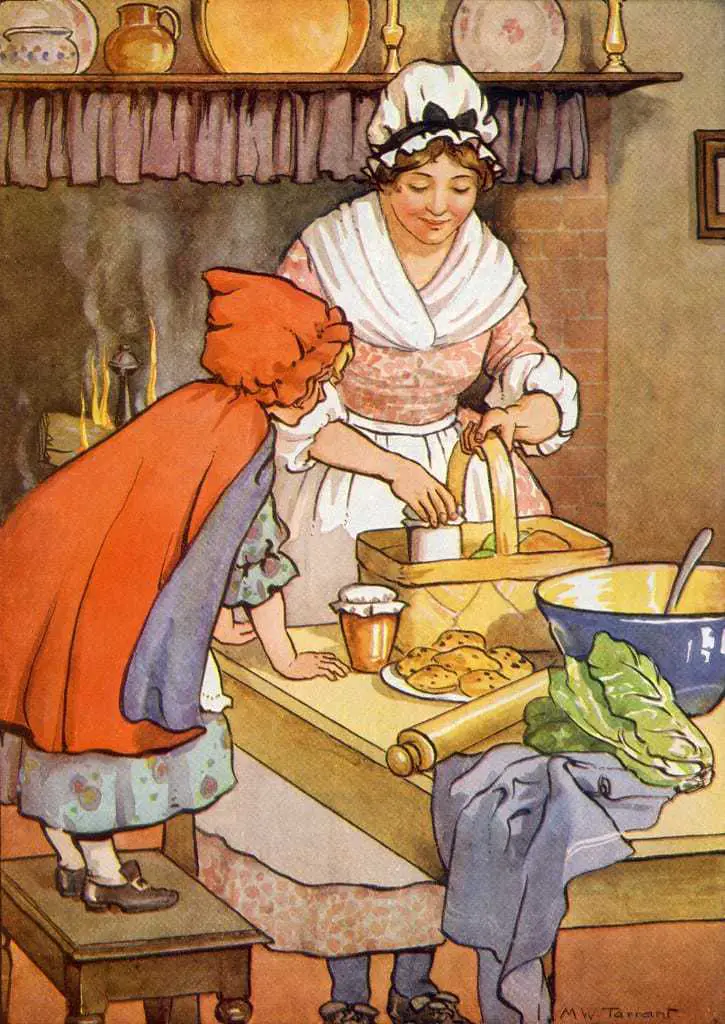
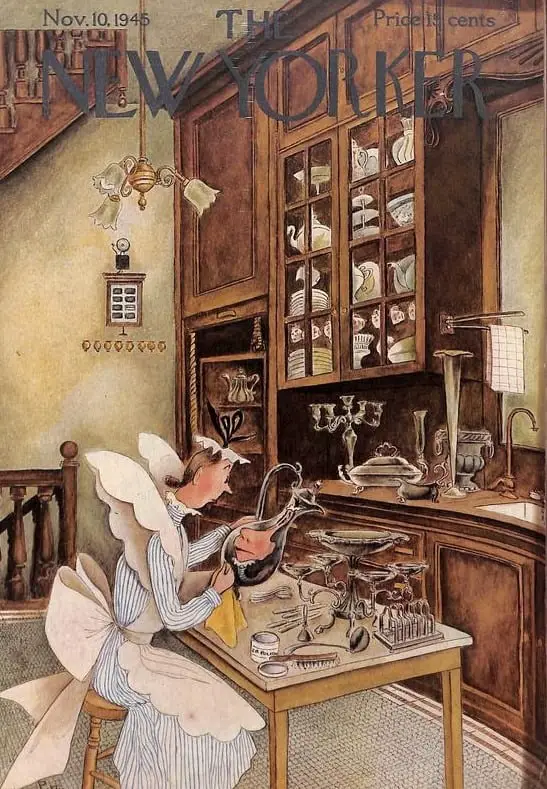
Bush Picnic by Eveline Dare and John Richards (1970)
Here we have a happy nuclear family, but with a modern and sleek kitchen (1970 version). This appears in a picture book, but might just as well appear in an advertisement for stainless steel kettles or kitchen design.
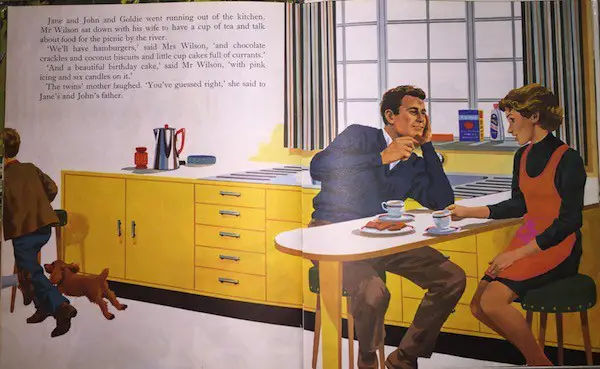
Courage The Cowardly Dog (Horror Comedy TV Series 1999-)

The Duck Tale (1908)
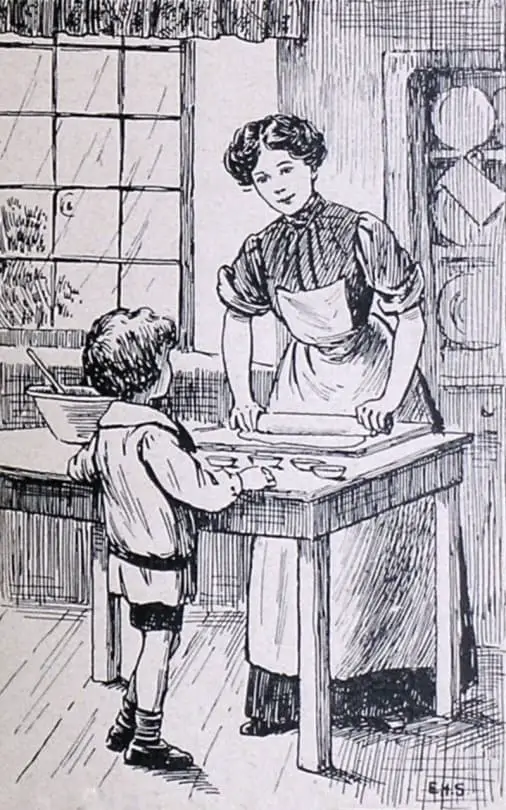
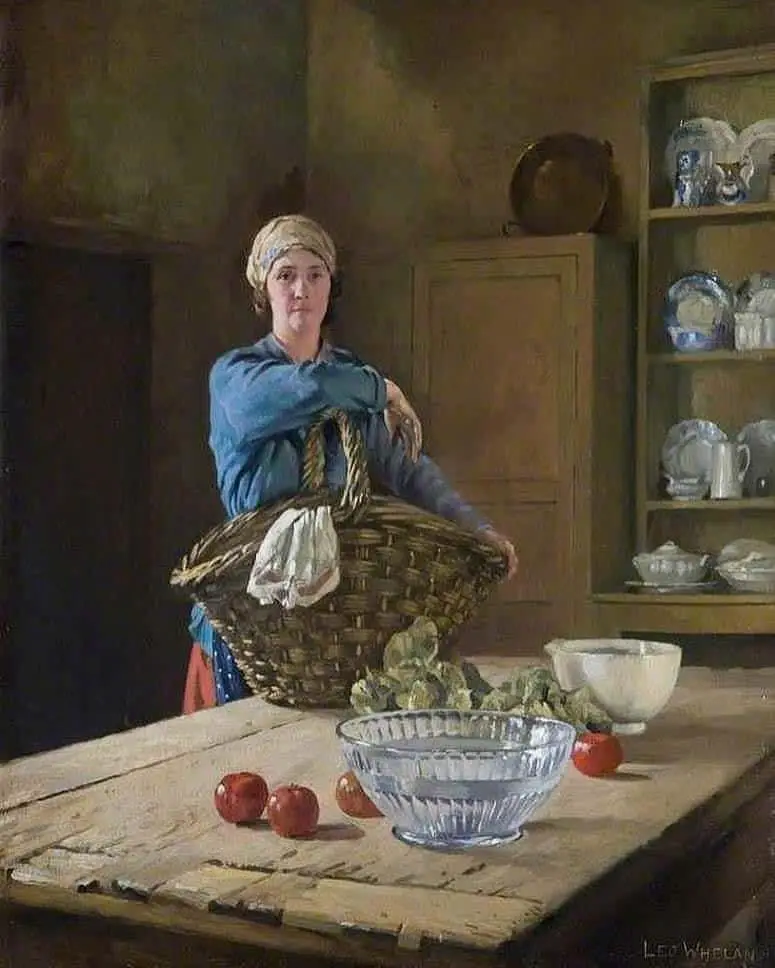
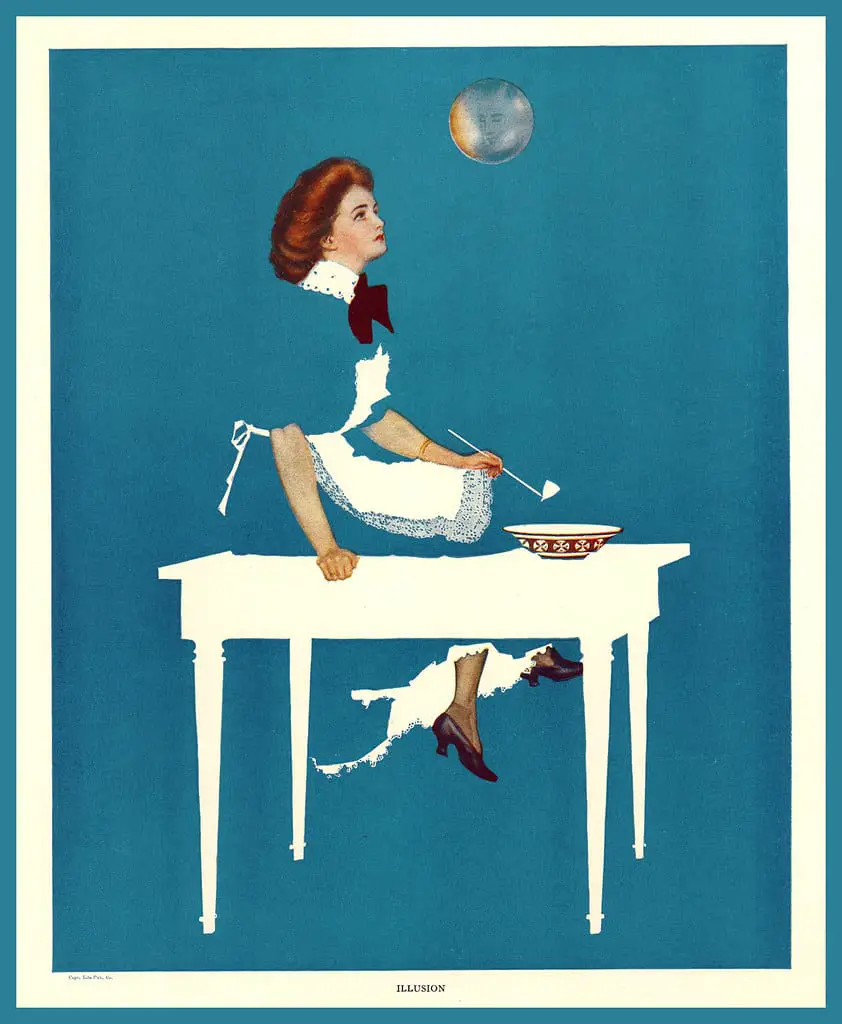
“A cold chain is a supply chain that transports and stores temperature sensitive perishable goods. The most visible manifestation of the cold chain is the electric household refrigerator.” – Jonathan Rees
The world was changed by the innovation of refrigeration. This week on A Taste of the Past, Linda Pelaccio is joined by Dr. Jonathan Rees. Dr. Rees is a professor of history at Colorado State University – Pueblo, and the author of Refrigeration Nation. Tune in to hear about the origins of the ice industry and ice boxes, and learn about ‘the cold chain’. Find out how compression refrigeration developed during the Civil War era, and why the marketing of refrigerators in the 1940s relied on size. Learn why cold storage was a controversial political issue, and how refrigeration was essential to the development of the supermarket. How were frozen foods received upon their arrival?
“Ice was something that all classes were interested in, whether or not all classes could afford it.” [5:50]
“Producing food and having it spoil is just as harmful to the environment as refrigeration.” [17:10]
— Dr. Jonathan Rees on A Taste of the Past
History of Refrigeration
Header illustration is from Brambly Hedge. The grand kitchen at the Old Oak Palace. Everyone is searching for Primrose.
